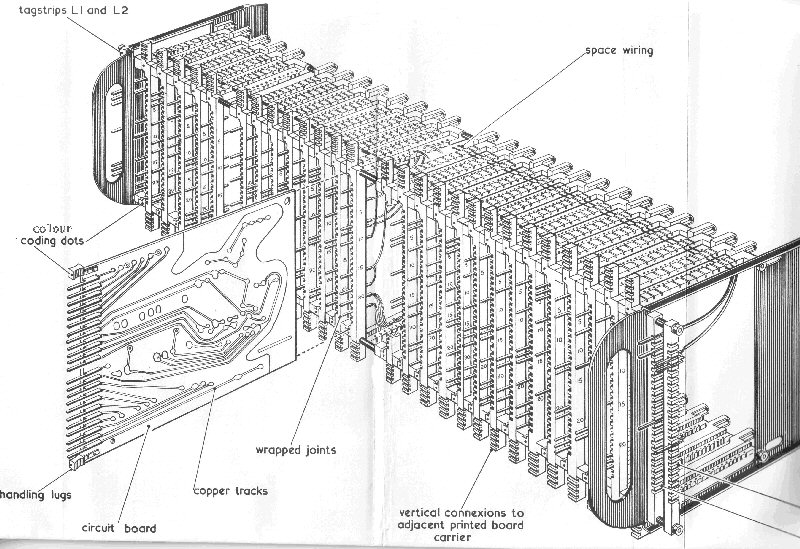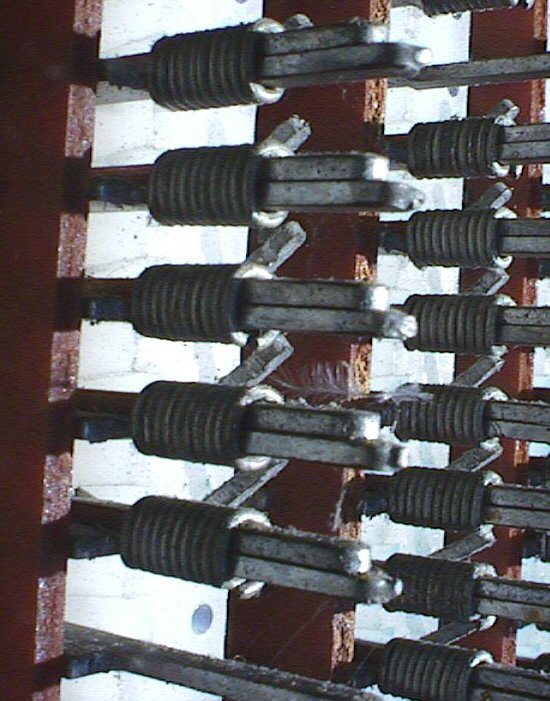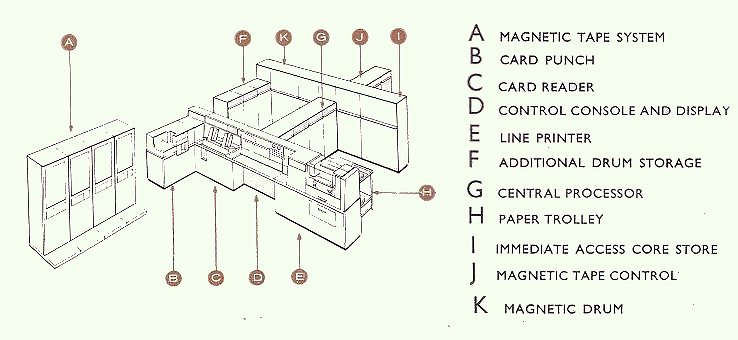








Story

(Hardware) Designer
Final Spec
Concepts
Old Comp

Software

People

Media

Support

Future

Links-

The ICT 1301 Resurrection Project.
The Final Specification
1301 Spec:-
The 1300 series was a second generation range of
computers. They were built with discrete Germanium PNP transistors
and diodes. The design positioned them as cost efficient work horses for
commerce, not one or two off machines built for maximum performance
at any cost for military or scientific work. The 'basic' 1301 has
three peripherals, a card reader for 80 column punched cards
operating at 600 cards per minute, a line printer with 120 columns
operating at 600 lines per minute and a card punch operating at 100
cards per minute. The CPU has intimate control of the peripherals,
this unbuffered approach saves a lot of circuitry and hence cost. The
performance of the peripherals was quite high for the period. The
basic machine has core storage and a drum backing store. Additional to
this was the optional magnetic tape sub system, which is buffered and
contains almost as many logic circuits as the basic machine. It
roughly doubled the cost of the machine when new, which in total cost
around a quarter of a million pounds. This sub system consists of the
Data Transfer Unit (DTU) and interfaces for magnetic tape drives (up to eight
could be supported).
1301 ( in depth )
The system lay out below was recovered from an original brochure, scans of which was
passed to us in the later end of 2004.ICT 1301 computer = with 1 inch Magnetic Tape. Just a few approximate vital statistics of the machine, follows:-
Width = 20ft , Length = 22ft , Power = 3 Phase industrial Supply
Approx. 7352 Germanium
transistors, ( and one single valve) used to produce a lot of
heat, and if the temperature got too high, the resultant problems
caused, would take a lot of hard work to locate. Printed circuit boards
were not pluggable, so when you thought you had found the duff board
all you had to do was, power off, remove up to 25 wire wrap connections,
replace the board, remake up to 25 wire wrap connections. Then you crossed
your fingers and powered up again.
Simple wasn't it ?
Speed = 1mhz Clock, Processing was 4 bits wide, serial 12
digits, 3 primary data registers, plus 3 control registers. All
the arithmetic functions were in decimal format, with an
alternate set of functions for processing Pounds, shillings and
pence.
Program storage was 2 thousand 12 digit words of fast,
'Immediate Access Store'. This was ferrite core store and with twelve digit
words this equates to 12 kilo bytes.
Further Program Store was on Drum with twelve
thousand words of Drum storage, again the 12 digit words make it Seventy two
Kilo bytes of Drum, which could provide overlay techniques for program
area's.
This machine shown also has 4 one inch magnetic tape
units each with a storage capability of 1.5 million twelve digit words approx,
around Nine Mega bytes of storeage.
Input Output was on punched 80 column
cards with 600 line per min printed output.
Typical work for this type of machine was to do
batch processing, of large datafiles held on magnetic tape,
although some alternative applications were attempted. No assembler was
used by the programming staff, this was a direct machine code
driven beast, or computing in the raw.
The 1300.
To produce a COST Reduced Machine several changes were made to the design, the number
of store units ( modules of 400 words ) were limited to two. A Half Drum with only half the
read write heads and limited decode logic was assembled. And the crucher was that the card
reader and printer only ran at a maximum speed of 300 ( not the full 600 ) by fitting different
sized pully's. The Removal of some of the decode logic gave at least one engineer a headache
when a programmer tried to address an area of the drum beyond the allowed range, the logic
wrapped round and re-addressed the lower area of the drum, Suitable chaos ensued !
The 1302.
To produce a More Advanced design the 1302 was produced in very limited quantity.Lots more info here on its own page.
Concepts common to all three designs were the logic boards and the racks which housed them:-

The type of connections were also common across the range:-
And below is a close up of the wrapped joint connections.

And in truth the connectors have worked well, as this machine is over 50 years old in terms of design and is ( mostly ) working well.

